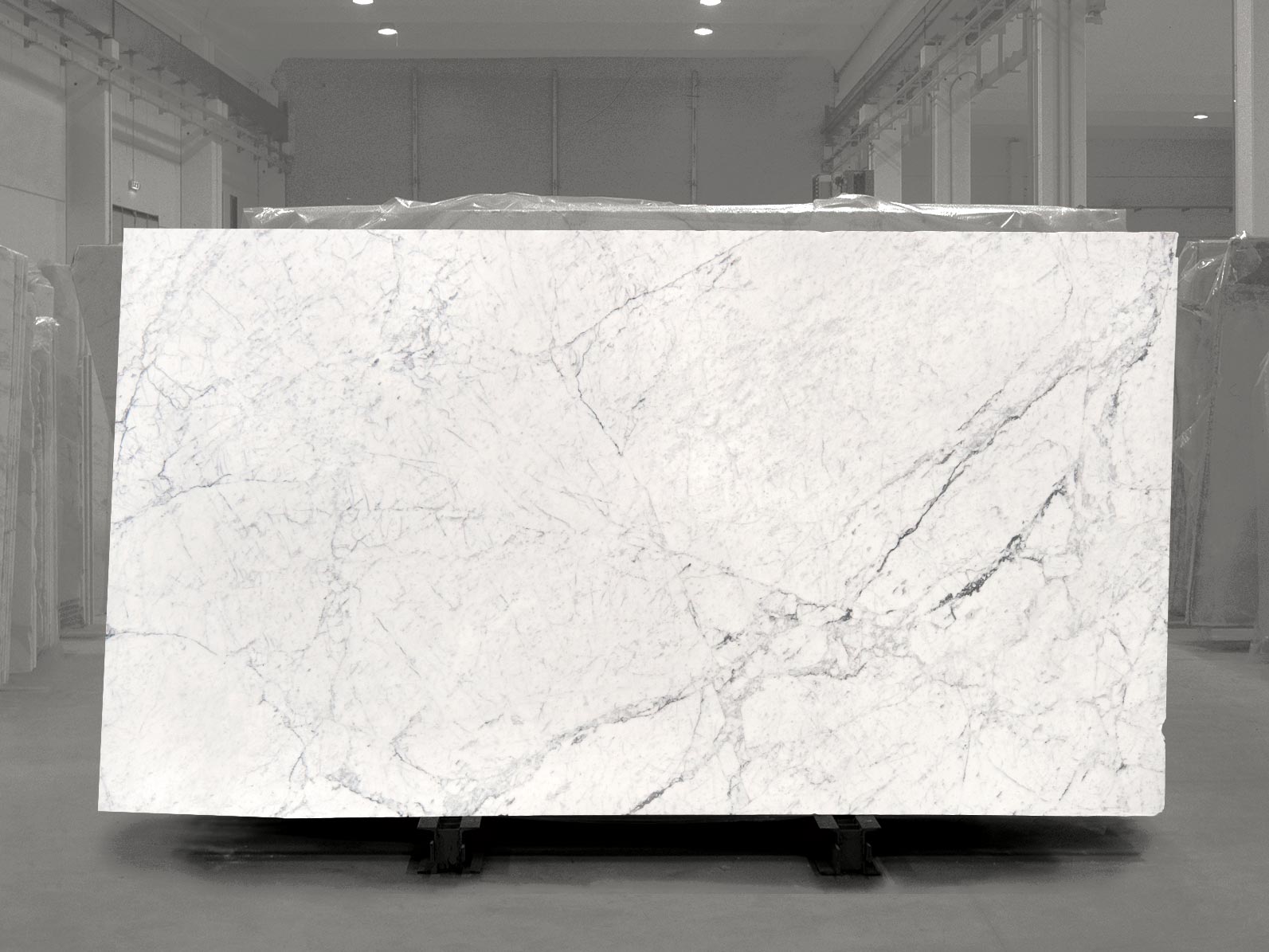Themarble slabs with two or four refilled sides have a standard thickness of 2-3 cm, but it is always possible to obtain, on request, a thickness of 1.8 cm or greater than 3 cm. The slabs of Paonazzo, Paonazzetto and Bardiglio marbles always undergo reinforcement and/or resin finishing processes.
The broken slabs, whenever it is possible and according to the amount of defects, are reinforced by using the processes of resin finishing and, eventually, reinforcement. The marble slabs which need to undergo these treatments are pre-smoothed firstly, for two reasons: to make the surface smoother by reducing possible ruts caused by the cutting first of all, because the pressure needed from the mandrels during the resin polishing would be higher. When this happens, the too aggressive pressure may remove an excessive portion of the resin and the defect would be reopened. The second objective is to widen the subtler cracks through smoothing, to make it easier for the resin to fill them up.
If the slabs need further and greater reinforcement, as in the case of very fragile materials or because there are significant defects, they cannot be pre-smoothed immediately because they may break, thus they need to be reinforced before undergoing this process.
The reinforcement consists in placing a fibreglass and/or nylon net on the side opposite to the finishing one. It is essential that the marble slab is dry before undergoing the processes, because moisture contrasts the work of epoxy resin, which is necessary for the net to adhere to the slab; waiting for 4/5 days after cutting would be ideal, though there is a drying oven in which every slab stays for about two hours. The reconditioning work on the marble slab starts when it exits the oven: all the major defects are hand-plastered on the back side, for the resin not to filter and emerge from the finishing side; now the slab is put in the plant, where is covered with resin, then the net is applied by hand. The slab goes back to the oven for about 7 hours, the time the resin needs to solidify. After those hours, the slab exits the oven and can be pre-smoothed and the finishing side can be resin polished finally; it will stay another 7 hours inside the oven and it will be ready after that. It would be always better, when delivery times permit it, to wait at least 24 hours before going on with the polishing or the smoothing through abrasion, because the hot slabs from the drying oven are more sensitive to handling and contact with water.
It is possible to trace the marble slabs from the original block. The production cycle can also guarantee high supplying standards.
























